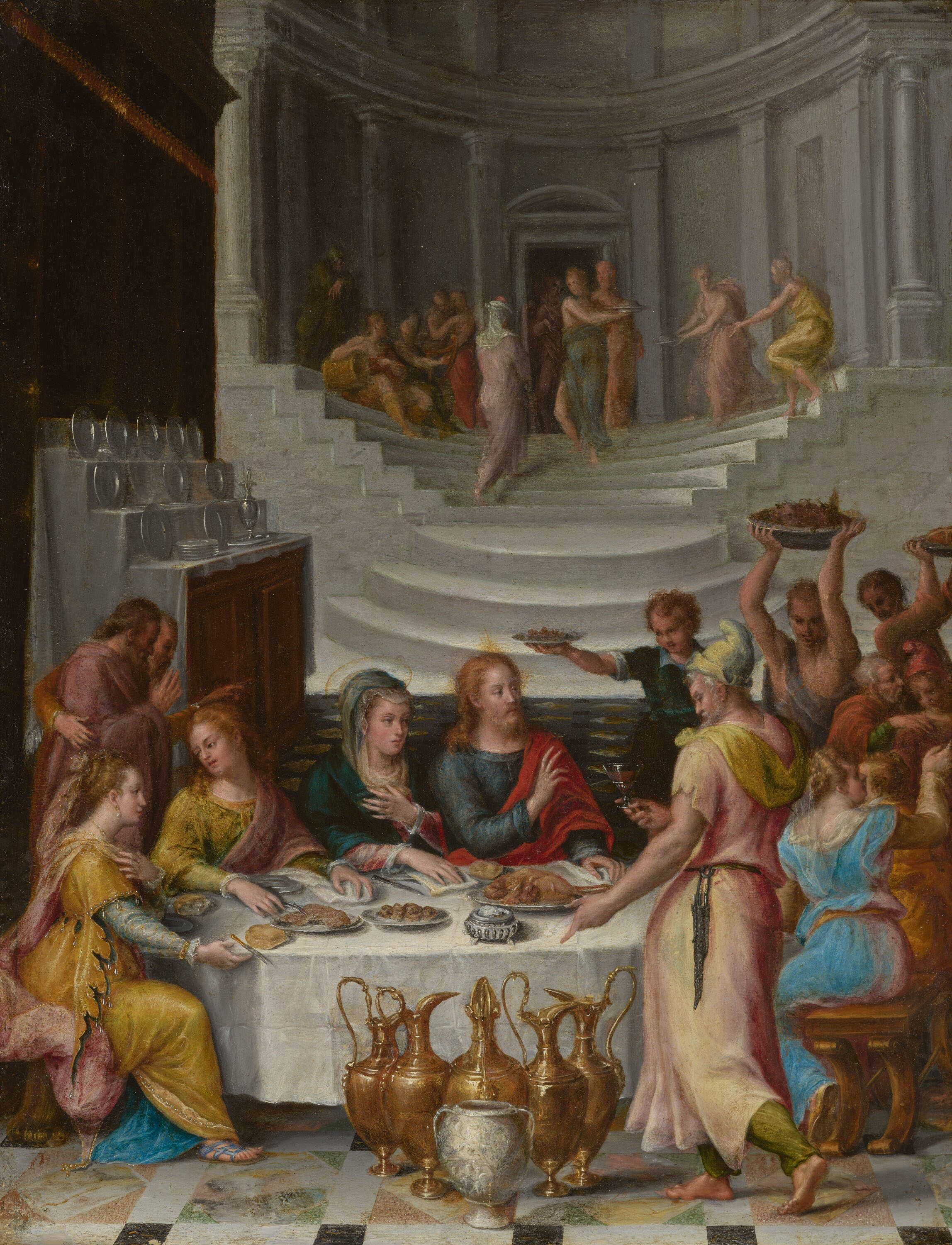Getty Buys a Lavinia Fontana
 |
| Lavinia Fontana, The Wedding Feast at Cana, about 1575-1580. J. Paul Getty Museum |
The Getty Museum has acquired Lavinia Fontana's The Wedding Feast at Cana from New York dealer Nicholas Hall Ltd. Fontana (1552-1614) is often described as the first woman painter in Europe to make a living from her art. She was the daughter of a noted artist (Prospero Fontana) and married to an otherwise obscure artist (Paolo Zappi) who became her assistant and dealer. Lavinia gave birth to 11 children while finding time to earn a doctorate at the University of Bologna. Best known for her portraits, she also treated the multi-figure religious themes that were the most prestigious subjects for Renaissance artists. After her father's death, Fontana moved to Rome, enjoying the support of Popes Clement VIII and Gregory XIII.
The Wedding Feast is oil-on-copper, 18-5/8 by 14-1/4 inches. The Flemish artist Denys Calvaert, who studied with Prospero, is credited with introducing the use of copper as a painting support in Bologna. Lavinia adopted the medium and excelled in the employment of thin, colorful glazes on smooth metal. The Wedding Feast illustrates the tale of Jesus turning water into wine. The composition represents the apex of Bolognese mannerism with its balletic figures, iridescent drapery, and an eccentric staircase.
There are something like 15 Lavinia Fontana paintings in American museums. Three are at Baltimore's Walters Art Museum. In 1902 railroad tycoon Henry Walters purchased three Fontana paintings as part of the 1700-piece collection of a Roman palazzo. It's not clear how much Walters knew or cared about Fontana. Most of the other Fontana paintings in U.S. institutions have been acquired in the past few decades in a strategic effort to boost representation of women artists. The Getty's Fontana buy follows last year's purchase of an Artemisia Gentileschi painting and a Adélaïde Labille-Guiard pastel.
 |
| Lavinia Fontana, The Holy Family with Saint Catherine of Alexandria, 1581. LACMA. Here Lavinia uses her husband's name in her signature (lower left, on Catherine's wheel) |
This makes two Lavinia Fontanas for L.A. LACMA, which organized the pivotal 1976 show "Women Artists: 1550-1950," bought Lavinia's oil-on-canvas Holy Family in 2011. An Ahmanson Foundation grant of $1.75 million funded the purchase. The Holy Family shows a later development of the artist's style incorporating the influence of the Counter Reformation and the Carracci academy. (Incidentally, there's a portrait by Lavinia's dad in the Norton Simon collection.)
At the Getty, The Wedding Feast augments a group of Bologna School paintings that include examples by Nosadella, Ludovico Carracci, Guido Reni, Domenichino, Guercino, and Guido Cagnacci. The Nicholas Hall website says The Wedding Feast has been requested for a 2023 Lavinia Fontana exhibition at the National Gallery of Ireland.
 |
| The Wedding Feast at Cana as shown at Nicholas Hall |

Comments
My favorite old master picture at the Met is on copper: Rubens's brilliant "Portrait of a Man, Possibly an Architect or Geographer" of 1597.
https://www.metmuseum.org/art/collection/search/437530
Another copper, which the Met recently received as a gift, and which has transformed our Poussin collection: his "The Agony in the Garden" of 1626–27. The picture's size is monumental [for copper] at 24 1/8 × 19 1/8 in. (61.3 × 48.6 cm).
https://www.metmuseum.org/art/collection/search/442488
*
And I hope Getty sends that hellacious frame to the Good Will. It has no business being anywhere near Fontana's Mannerist picture.
I think Ted G liked that one, however - my opinion is flip flop from his - so I have to respectfully disagree.
Love love the teals at lower left, and lower right. Great coloration overall.
Brief history of Mannerist frames.
https://www.paintingframesplus.com/painting-frames-plus-frames-mannerist.php
If such things were dependent on folks like me, civilization wouldn't have gone much beyond grass huts or the Stone Age.
https://www.amazon.com/Looking-European-Frames-Styles-Techniques/dp/0892369817